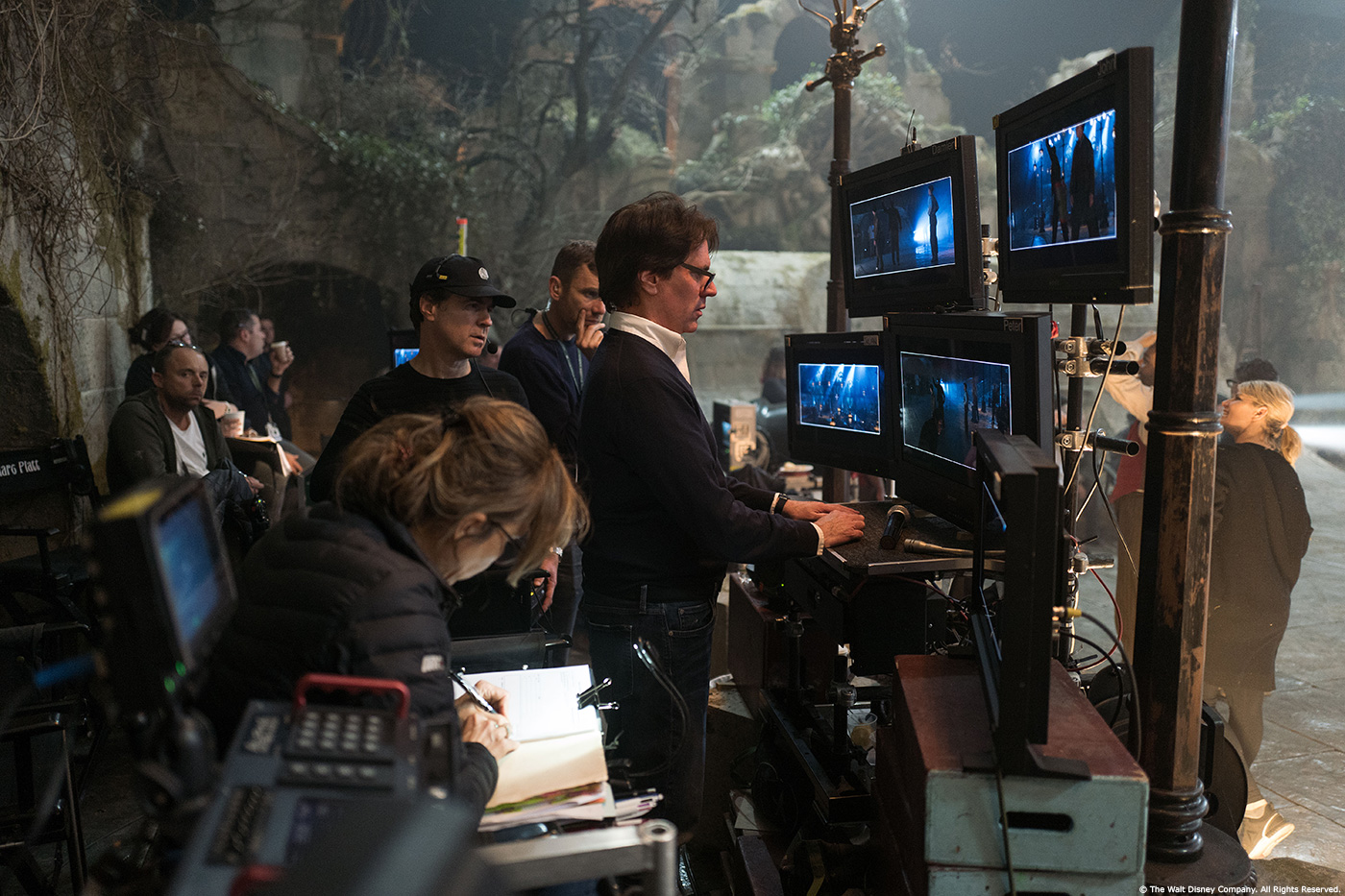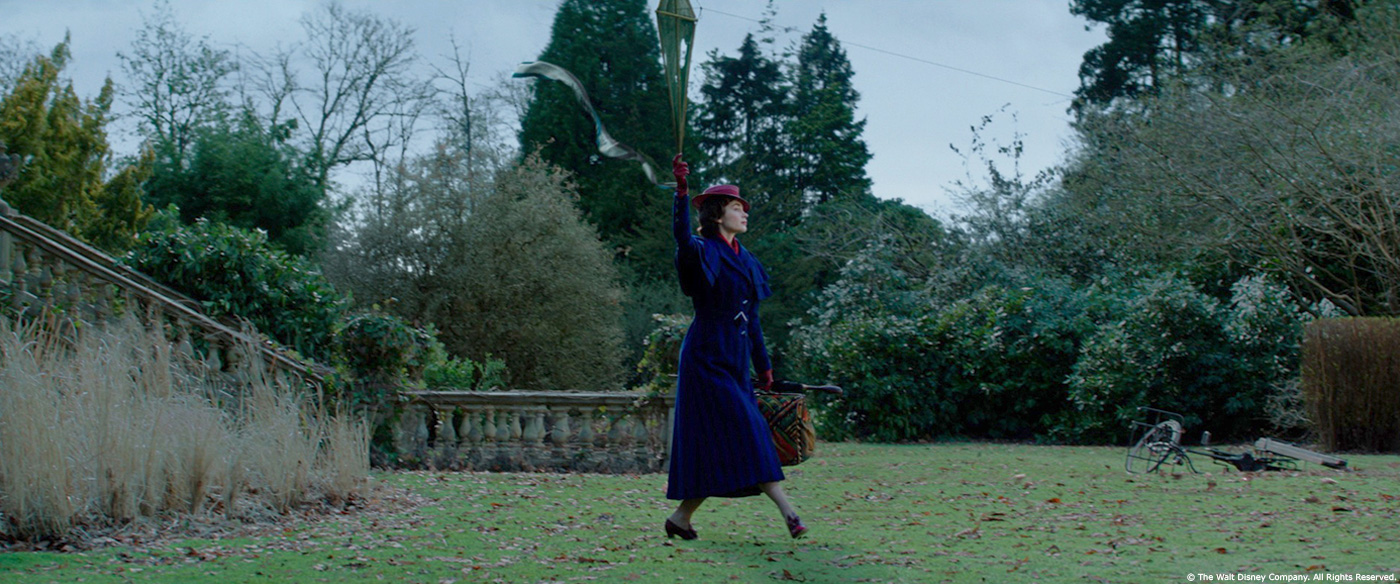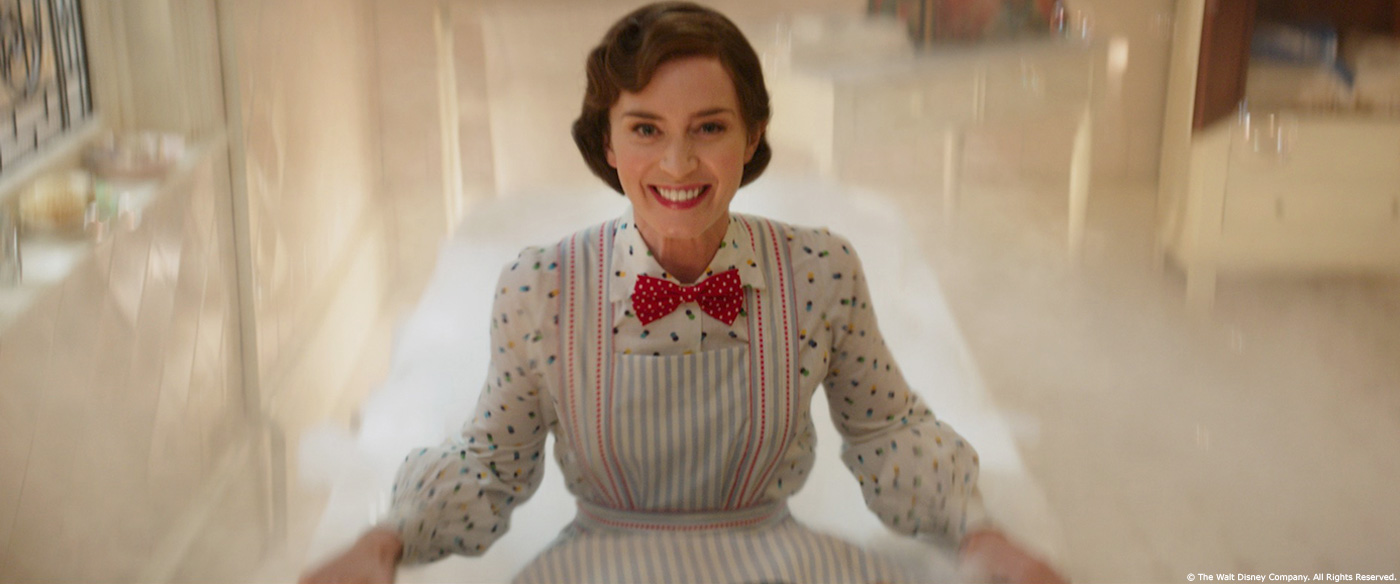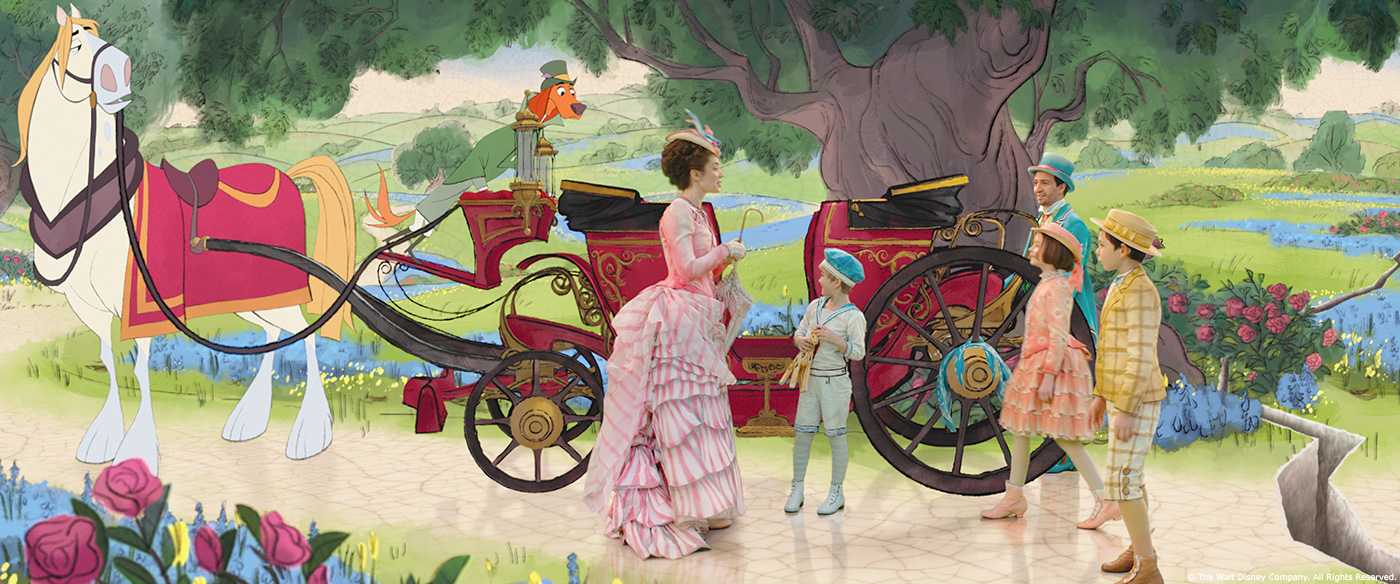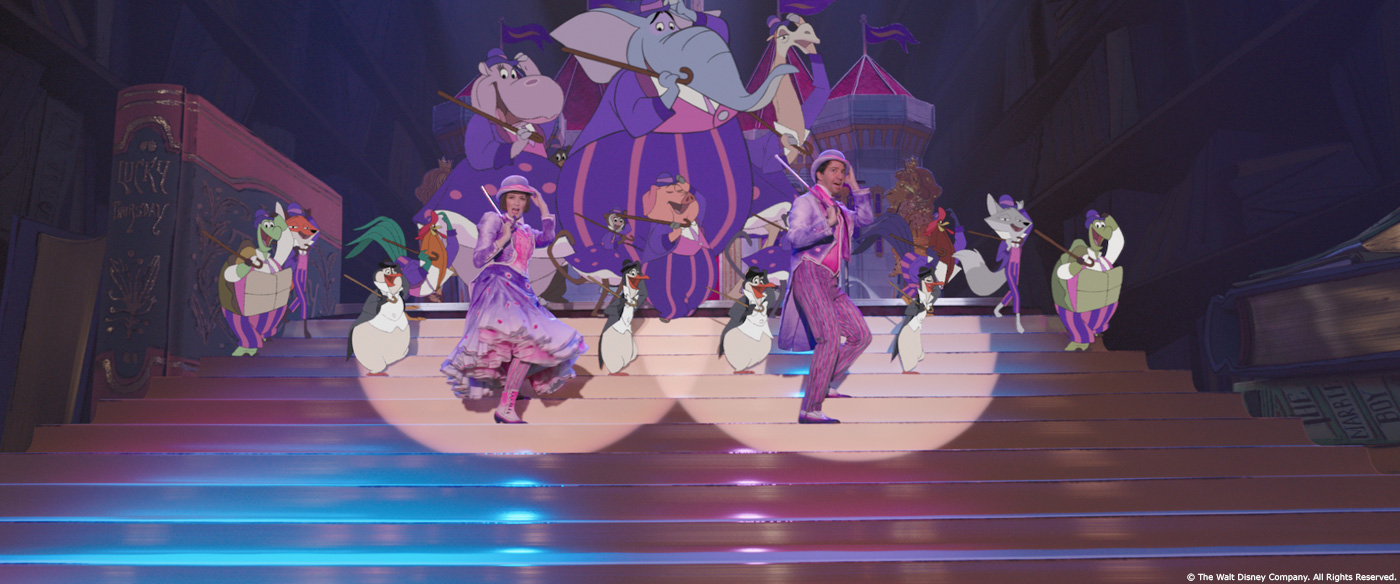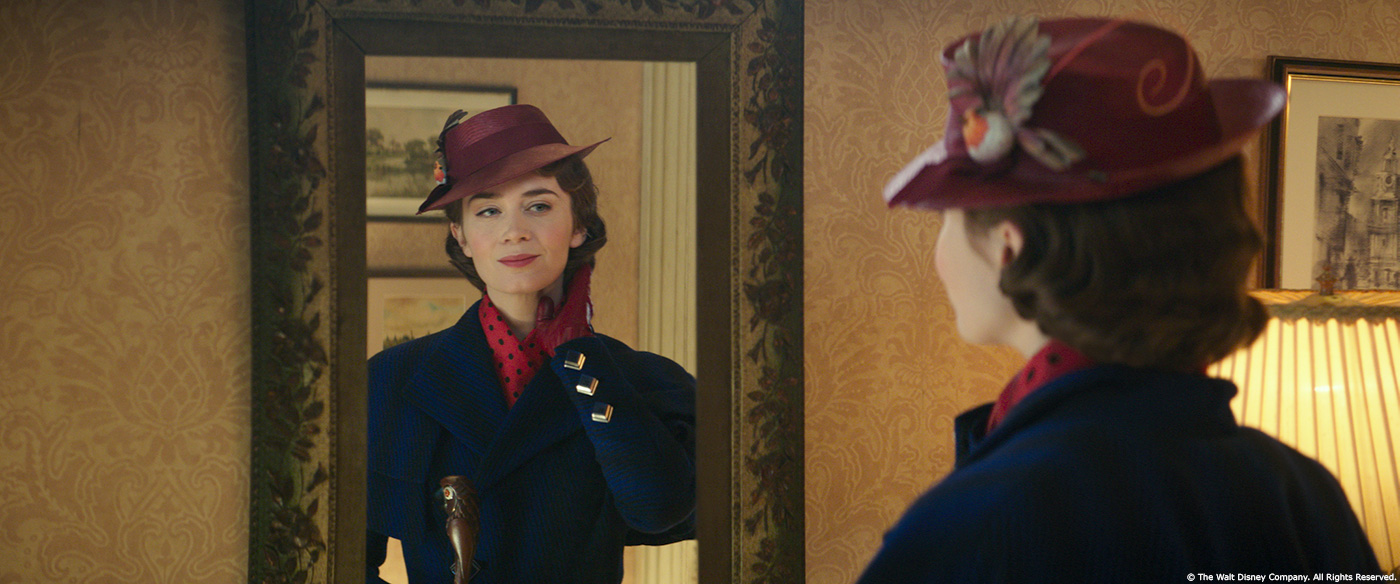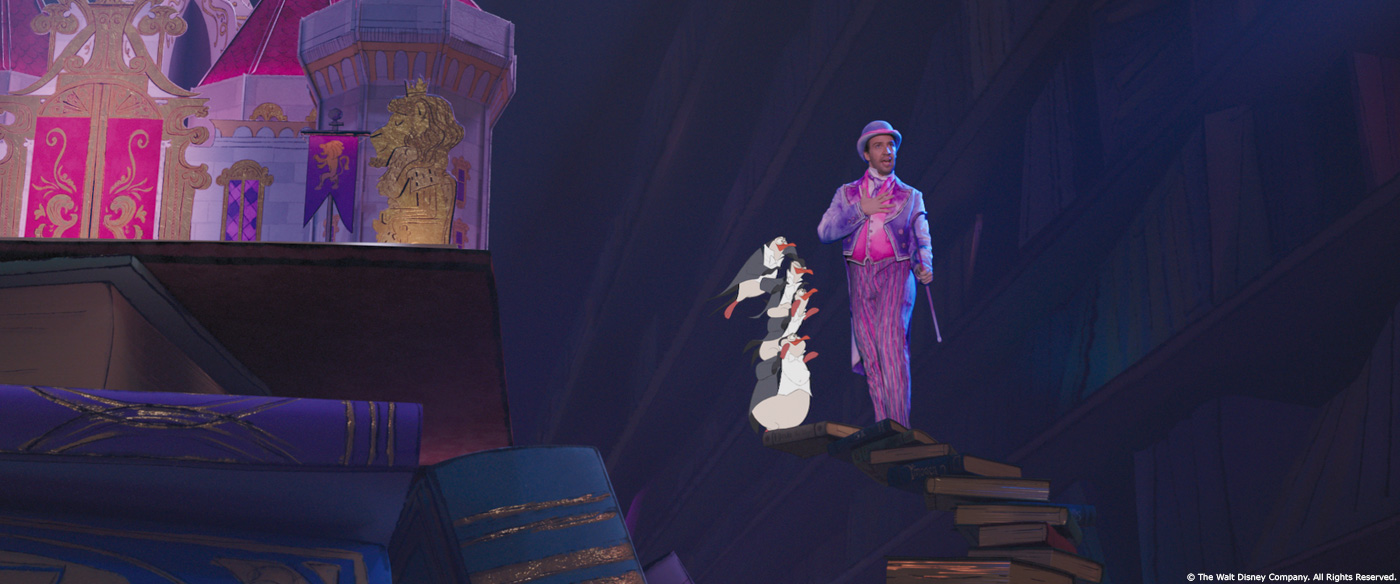In 2013, Matt Johnson explained the work of Cinesite on WORLD WAR Z. He then took care of the effects of films like JACK RYAN: SHADOW RECRUIT, INTO THE WOODS and NOW YOU SEE ME 2.
How did you get involved in MARY POPPINS RETURNS?
I was asked by Rob very early on if I wanted to do it. It was an offer I couldn’t refuse.
What was your feeling to be part of this iconic film?
It was tricky, as MARY POPPINS is such an iconic film, and part of so many people’s childhoods. I was very aware that I couldn’t screw it up!
How was this new collaboration with director Rob Marshall?
It was great. Rob has such a great eye. It’s interesting as you have to make so much more happen in real time on set, much like a broadway show. He is also very focused on movement and performance, so often real actors and dancers are used rather than digi-doubles.
How did you organize the work with your VFX Producer?
Leslie Lerman is amazing — we worked together very well. She takes care of so much of the organization and allows me to focus on the shooting and pretty pictures.
Can you tell us more about the previz and postviz work?
The previz was essential to the shooting of MARY POPPINS RETURNS. We focused on primarily three sequences: the “Can You Imagine That” underwater and above the ocean fantasy sequence, the scene where Jack and the leeries scale the houses of Parliament, and also the climactic “Nowhere To Go But Up” balloon sequence as the Banks family floats over the rooftops of London. The previz was handled by The Third Floor in London and we had them embedded at Shepperton Studios. They did an amazing job. We were able to take the storyboards and edit them into the sequence with songs and from there we were able to build up extraordinarily detailed animatics — they were so refined, you could watch them on TV.
With postviz, one of the key things about working with Rob is he won’t look at anything with green screens. So, it is very key to have extremely high quality temps of everything as he is watching the movie because we needed to keep his mind on the cut as he was watching it. The vendors particularly had to do a lot of initial comps, keys, etcetera in order to have things that would fit in the edit for it to be viewed currently.
Can you explain in detail about the creation of the various London environments and especially Cherry Tree Lane?
The London in MARY POPPINS RETURNS is almost a key character in the film. It’s interesting because we were going for a different look from the first movie. This is the time of the Great Depression in 1934, so we wanted London to have a darker and slightly sadder look at the beginning of the film. I worked very closely with John Myher, the production designer, looking at concepts and ideas for what the vision of London would be. I spent an awful long time on rooftops with my VFX photographer, Aviv Yaron, and we photographed a lot of suitable buildings. This was a challenge because London looks a lot like Manhattan now. We tried to use photographic elements wherever possible in creating the vistas of London; however, of course, in the back of my mind, was the iconic work of Peter Ellenshaw, the map painter and visual effects supervisor of the first film. So, there all these subtle nods to the past, but done in a very contemporary and photographic way.
What was the size of the various sets?
The largest was Cherry Tree Lane that took up most of H Stage at Shepperton Studios, one of the biggest stages in the UK. H Stage is 45 feet high and offers 30,000 square feet of space.
How did you create the Mary Poppins arrival into the storm?
It was interesting as it was the first time Mary Poppins had been seen on the screen in over 50 years. So, we were very aware of the expectation that that presented. We started the sequence with a kite being blown out of a trash can, traveling across the park opposite to Cherry Tree Lane. That was a CG kite and it was an interesting animation work to make it feel as organic as possible.
The challenge for the Mary Poppins arrival sequence is that it was supposed to be a gray, stormy, and cloudy London. However, when we filmed that sequence–ironically enough–in England, it was a gorgeous and sunny day–and there were days and days of blinding sunshine! So, one of the keys parts of that sequence, was actually we had to change the look of every shot and replace the skies in every frame and try and remove a lot of the shadows that were cast by the sun. That was establishing the environment for the sequence.
And then, when Mary Poppins, literally, returns, we used a lot of different time lapse cloud footage and composited about 15 different layers of rolling clouds together. All were timed to open with the swell of the music as a digi-double Mary Poppins is first revealed, holding onto the string of the kite. And then the subsequent shots, as she gets lower, is actually Emily suspended on location from a large crane. She is being physically lowered into the frame.
Can you explain in detail about the underwater sequence?
For Mary’s first song, she takes the children literally into their bathtub and beneath a magical ocean. The interesting challenge for this sequence is that Rob wanted to have as much of the performance in-camera as possible. That is to say, we couldn’t rely on digi-doubles as the characters were swimming. We needed to use the real performance, but he also wanted them all to be in the same frame at the same time and able to talk and interact with each other. Therefore, we created an elaborate wire rig, which ran down tracks in the center of the studio in order to film the characters against a green screen.
We used another trick. Typically, when you are filming underwater, you over-crank the camera, which we did a little bit. But, of course, the challenge was Emily Blunt is singing during the sequence. So, we got them to re-speed the music, slightly faster and in synch with the new camera speed, pitch-shift the vocals so it didn’t sound like “Alvin and the Chipmunks,” and Emily had to perform the song faster than real-life. So, when she was singing along, the music was played back faster. And when you looked at everything at the correct speed, everything was slightly slow motion, but her lip-synch was still perfect.
It was interesting creating the digital creatures. They were supposed to be real, yet magical at the same time, which was a challenge. We looked a lot of artwork of real tropical fish, etcetera and picked the most colorful and interesting shapes we could find. And then, we essentially turned them up to an 11 and made them a little bit more fantastic than they would be in real life.
As for the lighting, when we shot the green screen performance, we had reflected broken mirrors in the water, creating a caustic lighting effect on the cast, which we recreated digitally. It gives you the underwater rippling effect going over the corridor and the background. We worked hard to tie in that speed and timing into the live action photography.
Let’s talk about the iconic animated sequence. Can you explain in details about their creation?
The animation sequence in MARY POPPINS was hugely important, as it is such a fond part of the first movie. Therefore, we knew that we had to be respectful to the Disney silver-age animation style of the first film, but also utilize the latest in technology to allow a far more fluid use of camera movement, cranes, steady cams, etcetera which is very much in keeping with Rob’s shooting style. The actors are all shot against green screen and we built proxy sets and props for them to interact with. For example, we made a green carriage for Mary, Jack, and the kids to ride in, which was the same size and shape of the intended animated carriage.
When we shot the musical stage, again we made a proxy set with every book and staircase, all one-to-one scale on stage so the actors were able to dance and move around the set freely knowing that it would line up with what we were intending to add in later.
For the animation for the characters, it was very important to utilize traditional hand drawn, 2D artistry. Many former Disney animators came out of retirement to contribute to the show. It was literally back to the drawing board, pencil and paper work, to get the animated figures! We then took those 2D characters and–it varied a little, depending on the scene–but for the Royal Doulton Music Hall sequence, we created a fully CG 3D music hall stage and then textured and lit it to feel like it was part of the classic 2D style.
There are many musical sequences. How did you enhanced them and especially the one with the street lights?
The musical sequences are obviously a huge part of this movie. The longest dance sequence in the film is “Trip the Little Light Fantastic,” which takes place in a sunken park, somewhere in London, which is the leeries’, or lamplighters’, hideaway. That set was built at Shepperton Studios, but digitally we extended the environment. So, in reality, there was one glass house on set and we created far more of them to enhance the scene.
I was based in New York during MARY POPPINS and I would often walk near the Bethesda Fountain in Central Park. I would look at the fountain and see trees and buildings in the distance, and that was really the inspiration for what we ended up adding into the deep background for the “Trip the Little Light Fantastic” set.
The other interesting challenge was that the street lamps that the dancers perform with were all top light to create pools of light in a very and almost theatrical way. However, that top lighting would light the heads of the street lamps as well, which didn’t look great, so we ended up replacing every single top of every street lamp with CG.
How did you create the flying sequence in the park and when Mary Poppins is leaving?
The flying sequence again was similar to the underwater work. We utilized wires to ensure that the real actors and specially trained dancers would be able to move throughout the frame. Again, a lot of complex wire work and camera movement to create the parallax required for the different elements. They were then combined with a five-mile square section of fully CG London and park environment. So, we created a little park, ferris wheel, tents, Cherry Tree Lane, and London going off for a distance of five miles, including various iconic landmarks to create a magical, vision of “happy” London. They are all 2D elements combined together with CG geometry to make the scene.
Can you tell us more about the digital doubles creation?
Digi-doubles were very sparingly used. Again, Rob is very keen to using real performers as much as possible. However, for example, the sequence where the leeries are climbing up Big Ben, we used digi-doubles just to add to the CG set that we created. But, wherever possible, we would use motion capture to record a live action performance and key the animation so that the subtleties of the performance were translated through to the digi-doubles.
Can you tell us how you choose the various VFX vendors?
Looking at reels and previous relationships, a very normal way.
How did you split the work amongst these vendors?
Framestore was responsible for the underwater, animation, Big Ben, and balloons over London sequences.
Cinesite handled much of London, including Cherry Tree Lane, the Bank, and Trip a Little Light Fantastic.
Luma Pictures was responsible for the Topsy sequence.
Can you tell us more about your collaboration with their VFX supervisors?
I work very closely with the vendors from all the companies, often with daily cineSyncs. Christian Kaestner from Framestore Montréal, Kyle McCulloch from Framestore London, and Christian Irles from Cinesite Montréal were a huge part of making the success of the movie. Christian and Christian often visited me on set to help out whilst we were shooting.
The vendors are all around the world. How did you proceed to follow their work?
Skype, cineSync, and visits to the facilities as required.
Which sequence or shot was the most complicated to create and why?
Getting the look of the underwater sequence was very complex, especially in getting the right blend of fantasy and reality. Also, the assets were extremely complex, so there was a lot of internal work to be completed before we had stuff to show to Rob.
Is there something specific that gives you some really short nights?
The Sea of Bath foam and flying over London.
What is your favorite shot or sequence?
I really enjoy the Music Hall sequence. Bringing back the penguins was a joy. And I was lucky enough to voice one of the penguins, named Charlie.
What is your best memory working on MARY POPPINS RETURNS?
Chatting with Dick Van Dyke about how much he loved visual effects and that he used to render is own CGI for his TV show.
How long did you work on MARY POPPINS RETURNS?
Close to two years.
What’s the VFX shots count?
1207 shots.
What was the size of your on-set team?
Nine people.
What is your next project?
That’s a great question!
A big thanks for your time.
WANT TO KNOW MORE?
Cinesite: Dedicated page about MARY POPPINS RETURNS on Cinesite website.
Framestore: Dedicated page about MARY POPPINS RETURNS on Framestore website.
Luma Pictures: Dedicated page about MARY POPPINS RETURNS on Luma Pictures website.
© Vincent Frei – The Art of VFX – 2019


